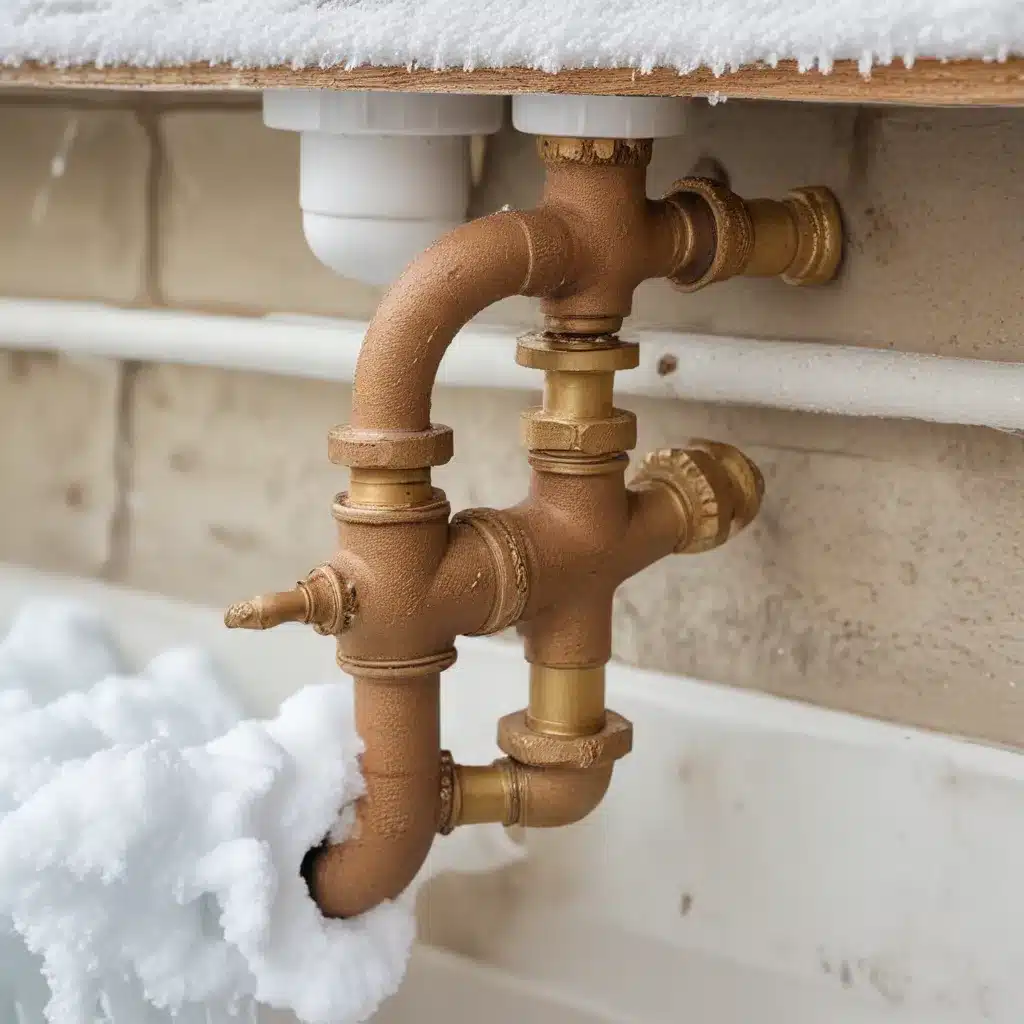
Safeguarding Your Plumbing Against Winter’s Chill
As the temperatures begin to drop and winter’s chill sets in, protecting your home’s plumbing becomes a critical concern. Frozen pipes can lead to devastating leaks, water damage, and costly repairs – a nightmare no homeowner wants to face. However, with the right preparation and preventative measures, you can keep your plumbing system running smoothly throughout the coldest months.
In this comprehensive guide, we’ll explore proven strategies to winterize your home’s plumbing and prevent frozen pipes. From insulating vulnerable areas to optimizing your heating system, these practical tips will help you maintain comfortable temperatures and reliable water flow, ensuring your investment in your home’s infrastructure is well-protected.
Evaluating Plumbing Vulnerabilities
The first step in winterizing your home’s plumbing is to identify the areas most susceptible to freezing. Pipes located in unheated spaces, such as the basement, attic, or crawl space, are particularly at risk. Exterior walls, where the cold seeps in, also present heightened freezing dangers.
To thoroughly assess your home’s vulnerabilities, consider enlisting the help of a professional plumber. They can perform a comprehensive evaluation, pinpointing problem areas and recommending appropriate protective measures. This assessment may reveal hidden issues, such as inadequate insulation or drafts, that could compromise your plumbing system during the winter months.
Insulating Exposed Pipes
Once you’ve identified the vulnerable areas, the next crucial step is to insulate exposed pipes. Foam pipe sleeves, fiberglass batting, and heat cables are all effective solutions for safeguarding your plumbing against the cold.
Foam pipe sleeves are an easy-to-install option that can be quickly wrapped around exposed pipes, creating a barrier against the frigid air. For pipes located in wall cavities or other hard-to-reach areas, fiberglass batting offers superior insulation, trapping heat and preventing heat loss.
In cases where standard insulation proves insufficient, heat cables can provide supplemental warmth. These specialized cables, installed along the length of the pipe, generate heat to keep the water flowing and prevent freezing. Professional installation is recommended to ensure complete coverage and proper operation.
Maintaining Steady Temperatures
Consistent heating patterns throughout your home play a vital role in protecting your plumbing. By keeping your living spaces at a steady, comfortable temperature, you can help maintain warmth in the wall cavities and other areas where pipes are located.
Consider adjusting your thermostat to maintain a minimum temperature of 55°F, even during the overnight hours. This helps prevent the surrounding air from dipping low enough to cause freezing. Remember to keep cabinet doors beneath sinks open, allowing warm air to circulate around the plumbing.
For homes with garages or other unheated spaces, keeping the doors closed can help preserve heat and protect any pipes running through those areas.
Promoting Water Movement
Stagnant water is more susceptible to freezing than moving water, so maintaining water flow through your plumbing system is crucial. By strategically opening faucets to a slow drip, you can keep water circulating and prevent ice formation within the pipes.
Identify the most vulnerable sections of your plumbing and focus your efforts on those areas. This could include pipes located against exterior walls or in unheated spaces. Regularly monitor the water pressure to detect any potential freezing issues and address them promptly.
Additionally, remember to disconnect and drain any outdoor hoses or irrigation systems before the cold weather arrives. Leftover water in these components can freeze and cause damage to the plumbing.
Protecting Outdoor Plumbing
Your home’s exterior plumbing, such as outdoor faucets and irrigation systems, require special attention during the winter months. These components are directly exposed to the cold, making them particularly susceptible to freezing.
Start by shutting off the water supply to any outdoor faucets or spigots, then open the taps to allow any remaining water to drain out. For added protection, consider installing insulated covers or “freeze-proof” faucets that are designed to withstand the cold.
For in-ground sprinkler systems, it’s essential to have the water lines professionally blown out and drained. This prevents trapped water from expanding and causing costly damage to the pipes and valves. Contact a local plumber or irrigation specialist to ensure your outdoor plumbing is properly winterized.
Monitoring and Maintaining Your Plumbing
Ongoing vigilance is key to keeping your home’s plumbing system safe from the winter’s wrath. Regularly inspect your home, both inside and out, for any signs of developing issues, such as drafts, cracks, or insulation gaps.
Consider investing in smart home technology, such as WiFi-connected thermometers and water flow sensors, to monitor temperatures and water usage remotely. These innovative tools can provide early warnings of potential freezing problems, allowing you to take prompt action.
Additionally, scheduling an annual plumbing inspection can help identify any underlying problems or wear and tear that could compromise your system’s performance during the winter months. A professional assessment can uncover hidden vulnerabilities and recommend targeted improvements to enhance your home’s cold-weather protection.
Conclusion: Proactive Plumbing Winterization
Protecting your home’s plumbing from the ravages of winter requires a multifaceted approach. By evaluating your home’s vulnerabilities, insulating exposed pipes, maintaining steady temperatures, promoting water movement, and safeguarding outdoor components, you can significantly reduce the risk of frozen pipes and the costly damage they can cause.
Remember, taking preventative measures before the cold weather sets in is key. At DD Plumbing and Heating, our team of experienced professionals is here to help you craft a comprehensive winterization strategy tailored to your home’s unique needs. Contact us today to schedule an assessment and ensure your plumbing system is ready to withstand the winter’s chill.


